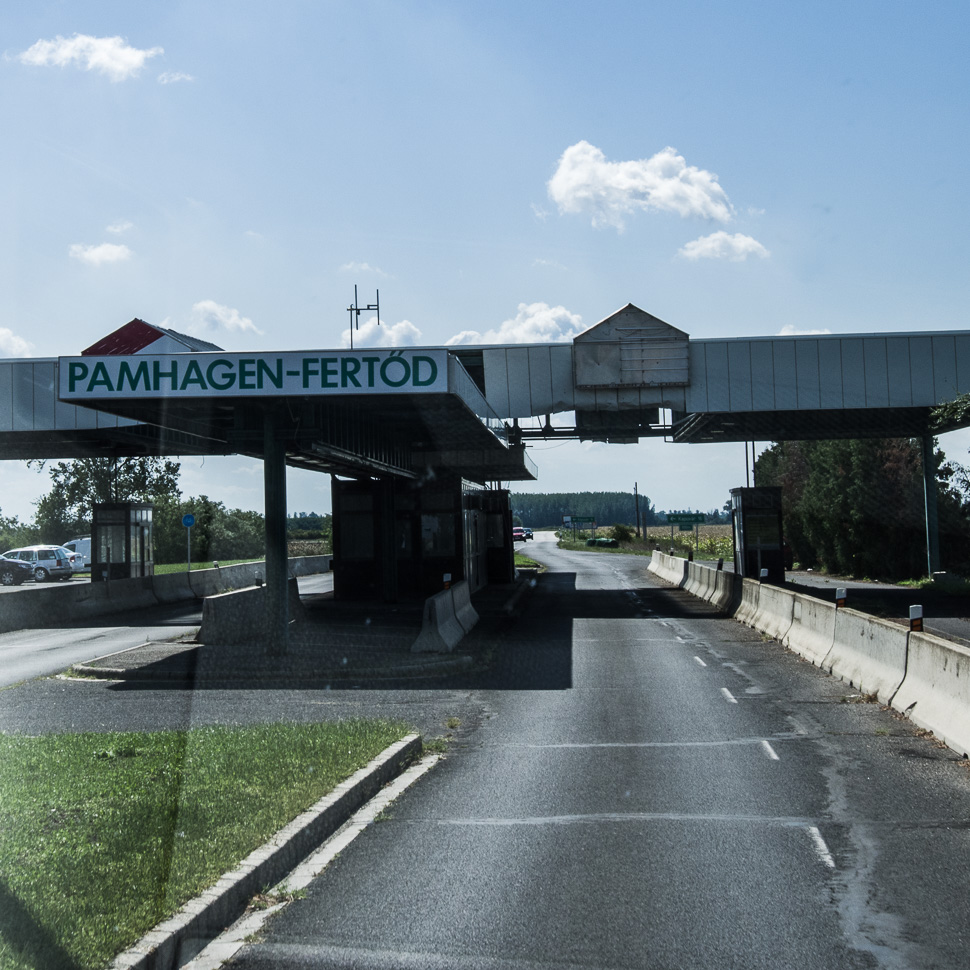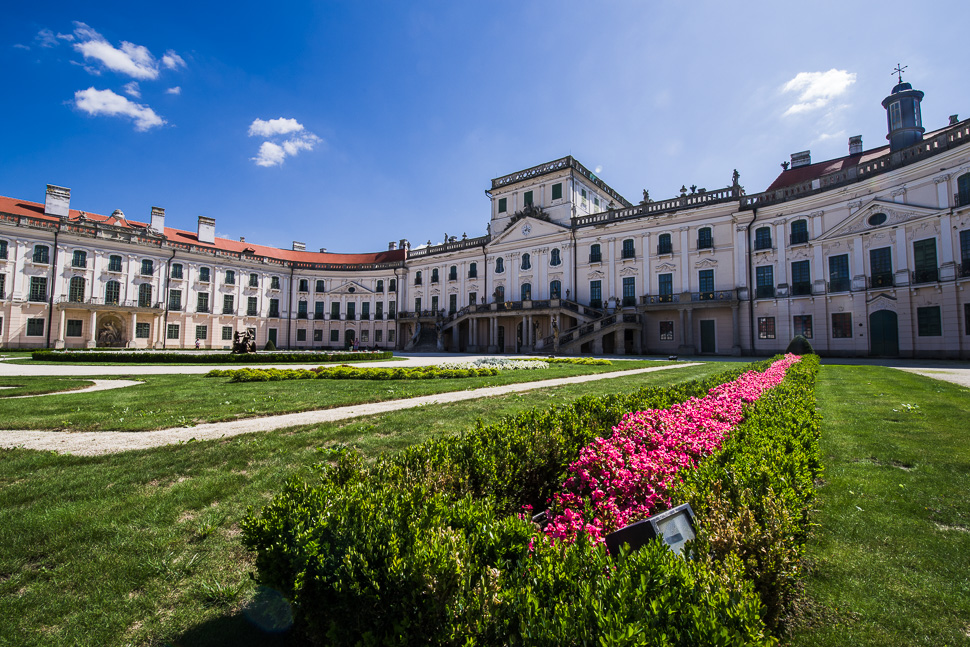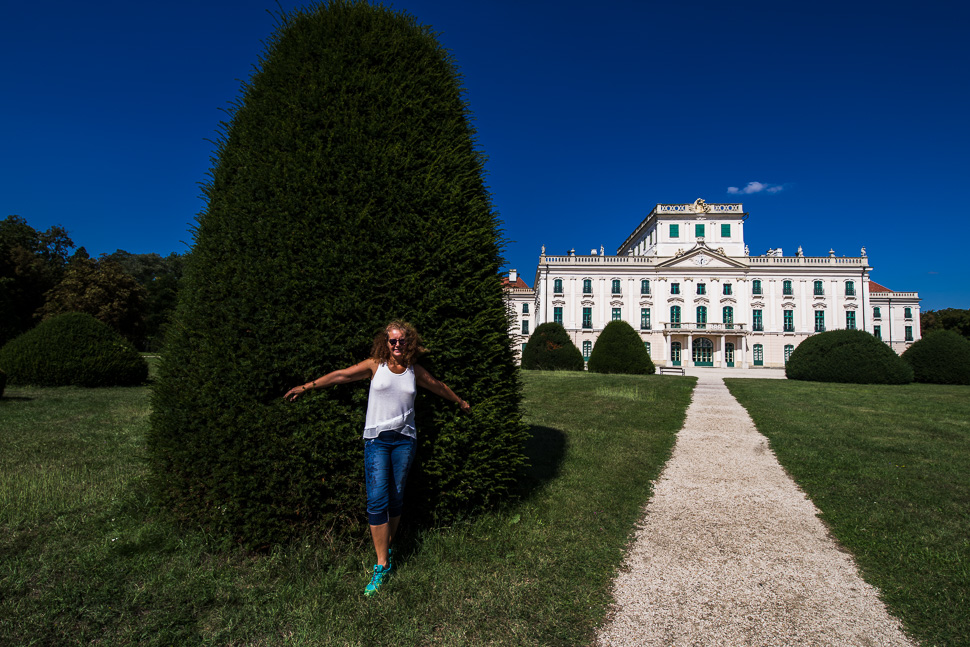We are now on our way to Greece, exploring Hungary first. The first highlight just after the border to Austria was the Palace of Esterháza in Fertöd.

 |
| Crossing the border near Fertöd |
 |
| Guided tour to visit the palace |
Esterháza was built in the 18th century by Prince Nikolaus Esterházy and is Hungary’s grandest Rococo edifice. The palace served as a summer residence where a magnificent, costly life with opera and theatre performances, balls, hunts and festivals of various kinds took place. Joseph Haydn was responsible for the music and the court orchestra. He composed numerous works for the opera house, which was part of the estate. In 1772 Haydn’s famous “Farewell Symphony” had its premier here, in which the orchestra musicians, whose part is over, leave the stage until only one musician ends the symphony.

After the death of Nikolaus Esterházy, the successors struggled with the debts because of the castle and dissolved the court. The building and park fell into disrepair. Only 100 years later, around 1900, when Nicholas IV (1869-1920) had overcome the financial crisis of the family, he was able to revive the castle. During the Second World War, the palace was heavily damaged and in 1945 the family was expropriated by the state of Hungary. Again, decay began. Finally, renovation of the castle began in 1959 and are now supported by the European Union.
 |
| Sala Terrana with the Italian charm of a conservatory |
 |
| Chinese inspired elements on the furnitures |
 |
| Chinese tapestry – very fashionable |
 |
| Original terra-cotta stove |
 |
| Original ceiling in the chapel |
 |
| Front of the palace, overlooking an expansive park |
The palace is still surrounded by a big park. A short walk led us to the rose garden, where we admired the last blossoms of this year.
 |
| Flower of the Day |














